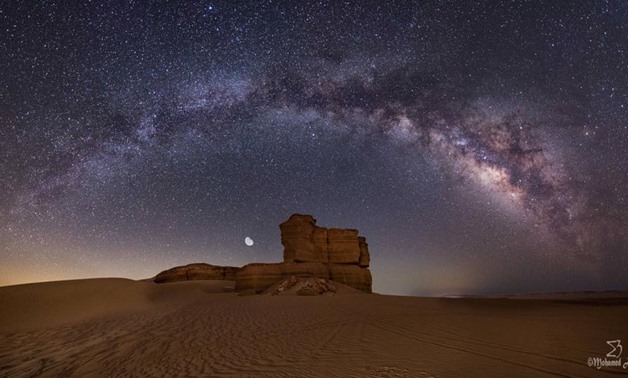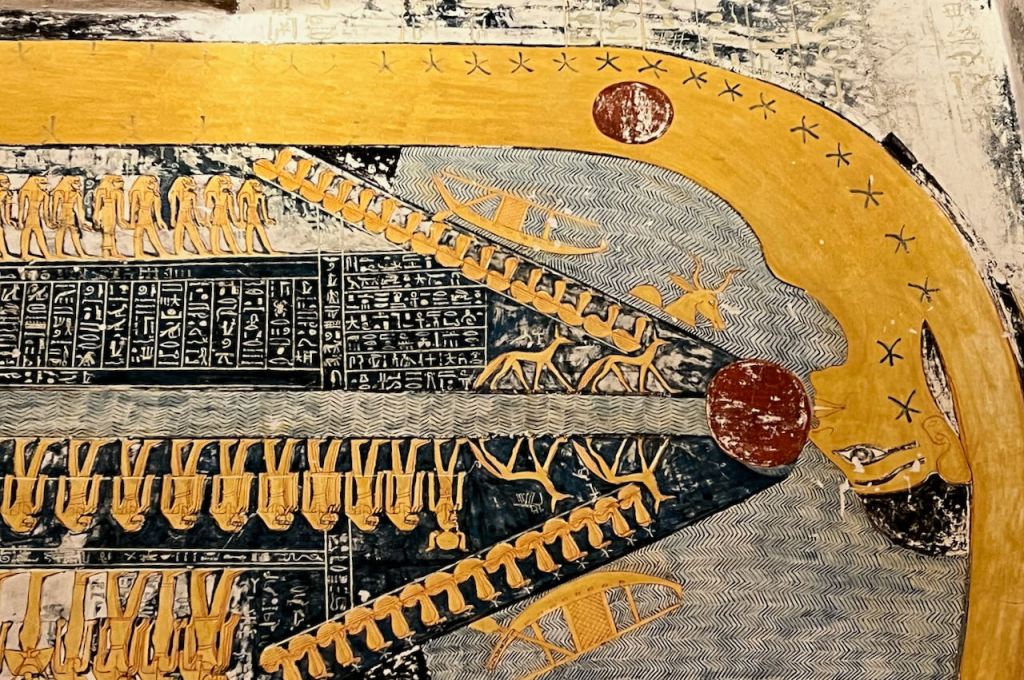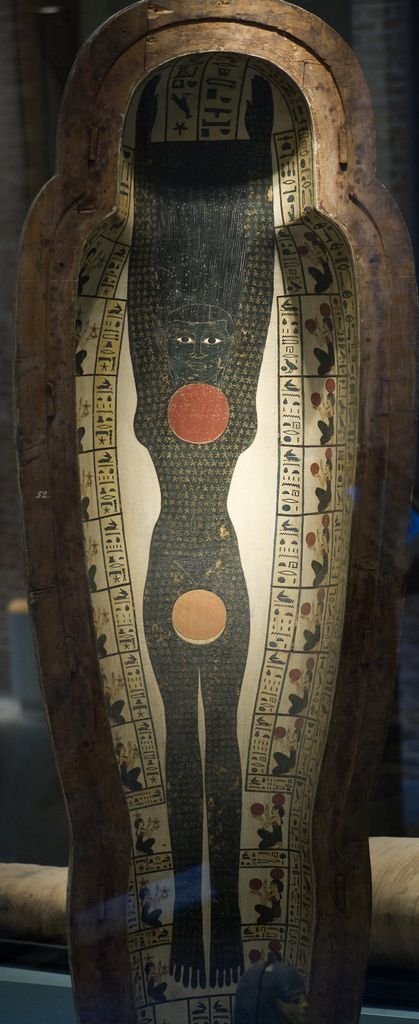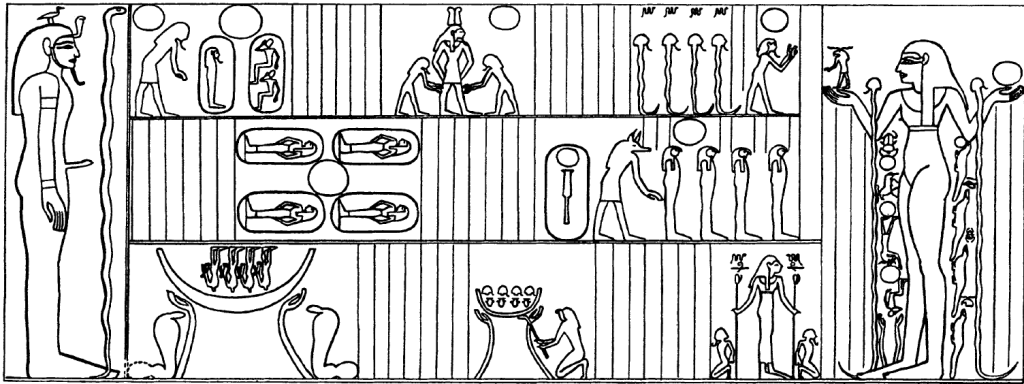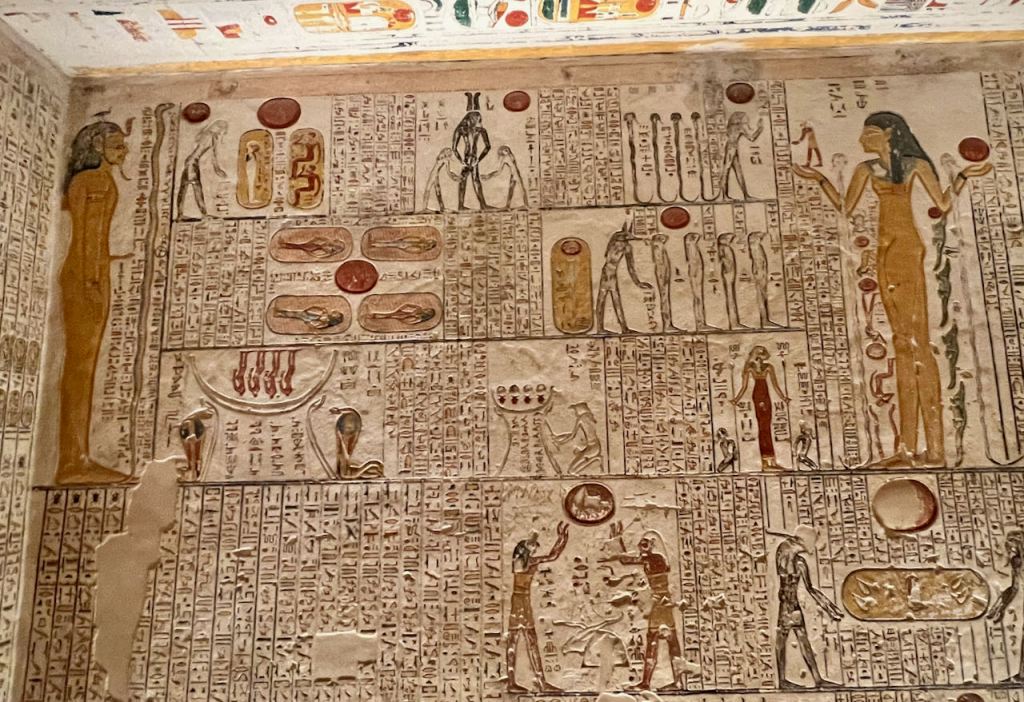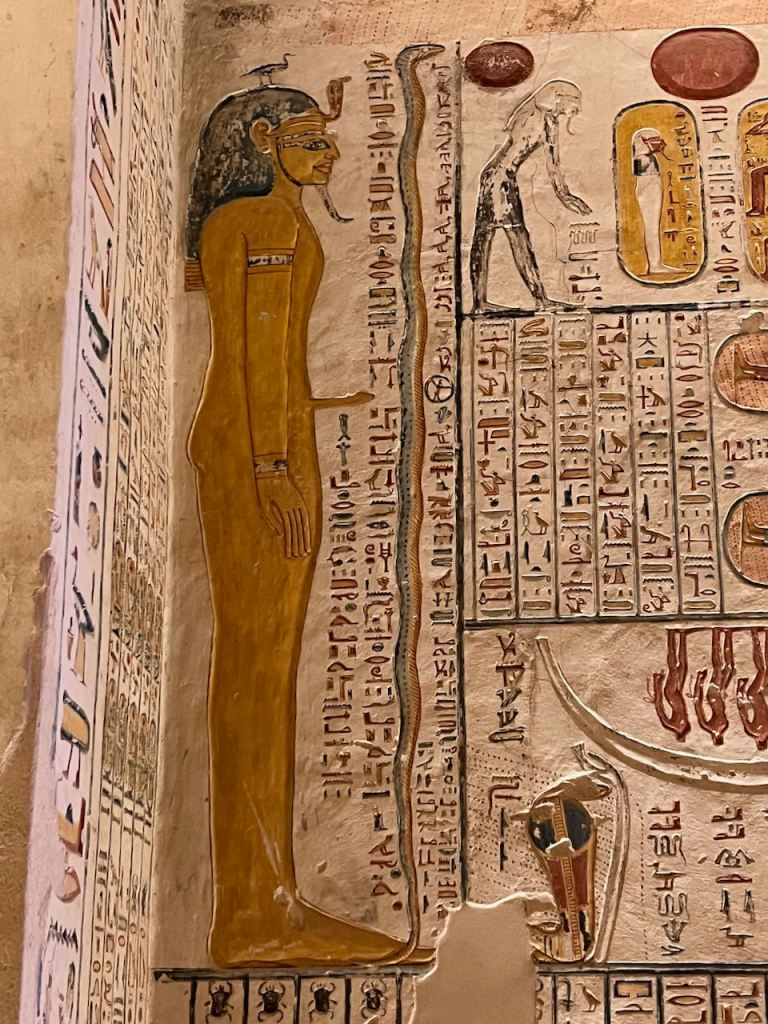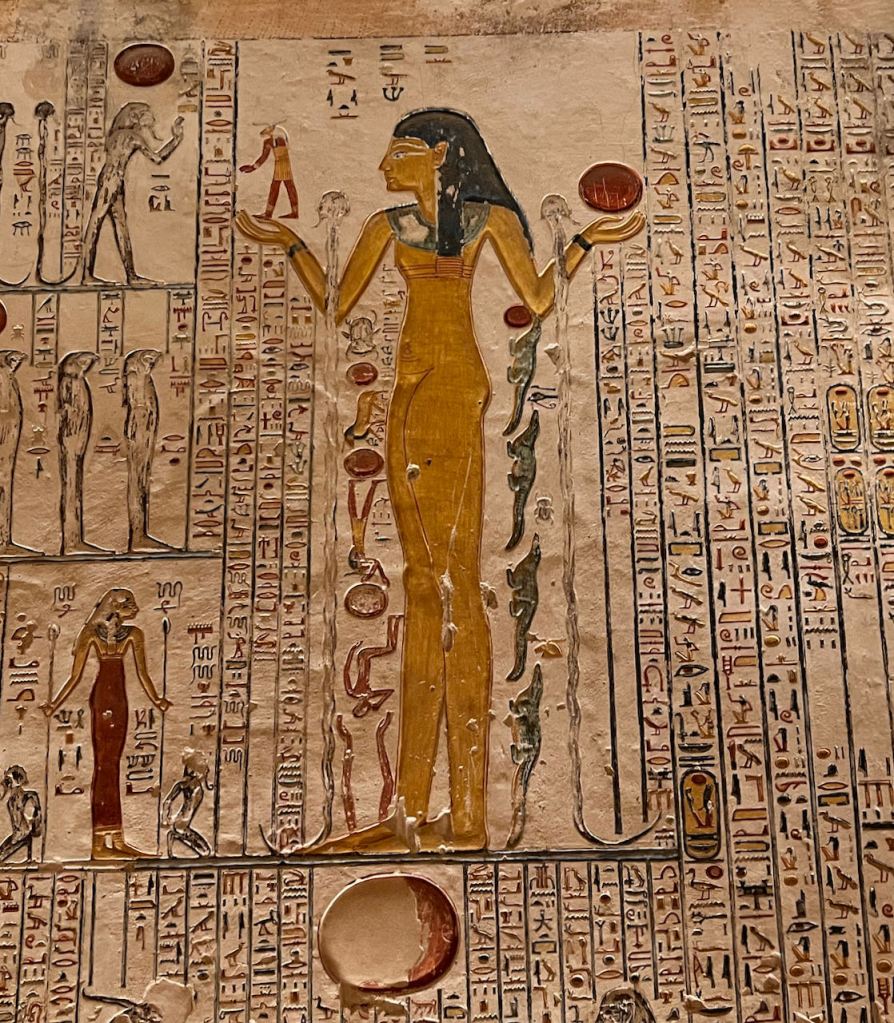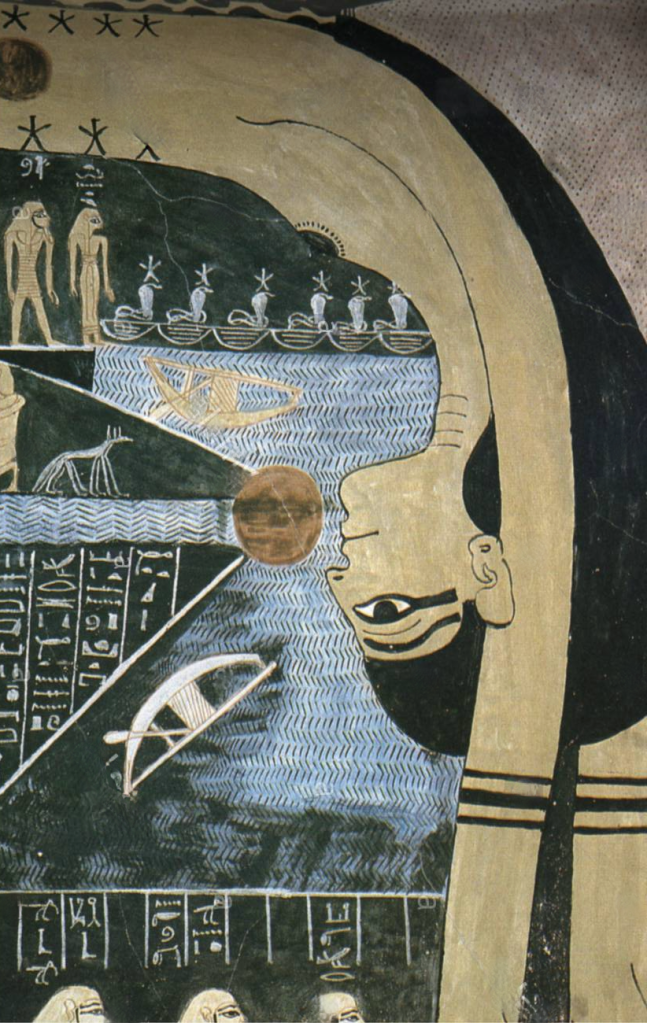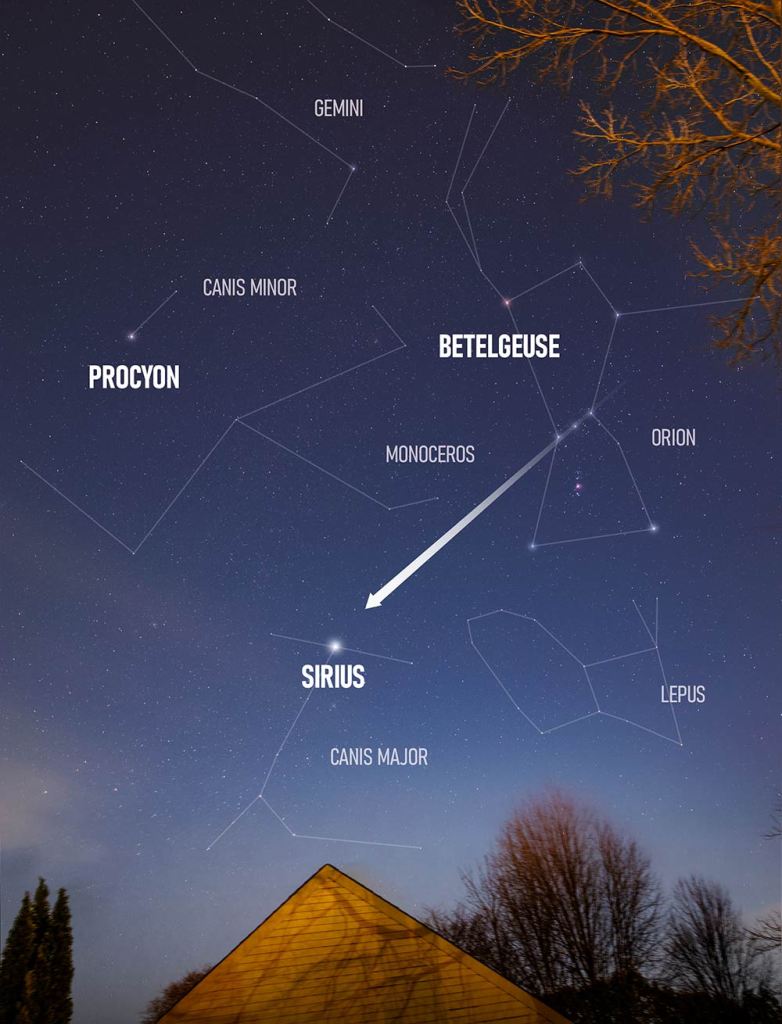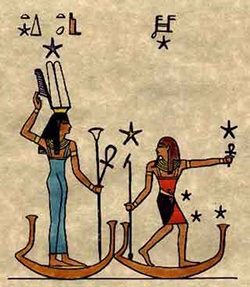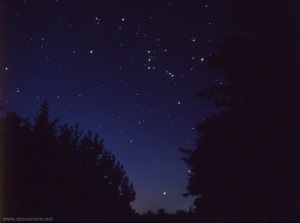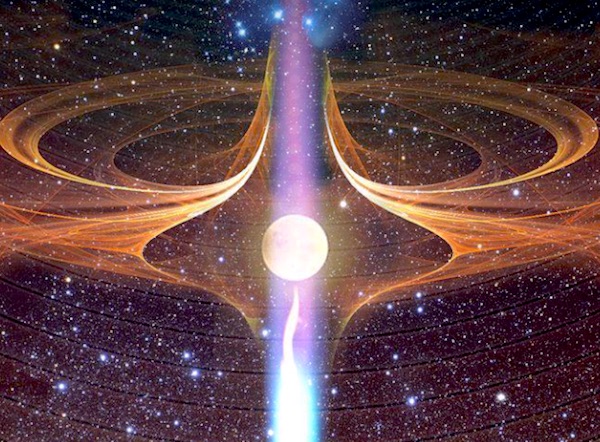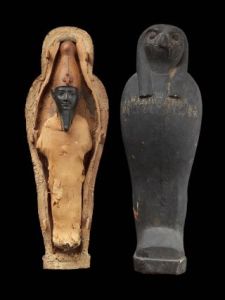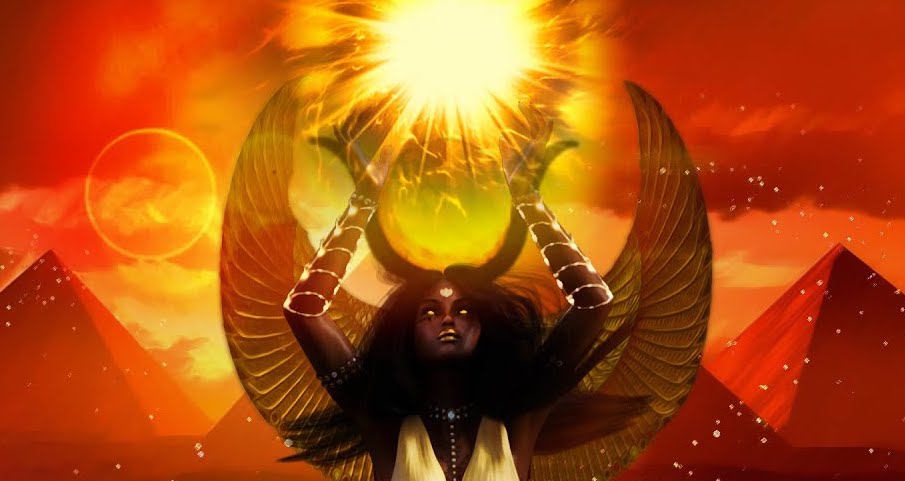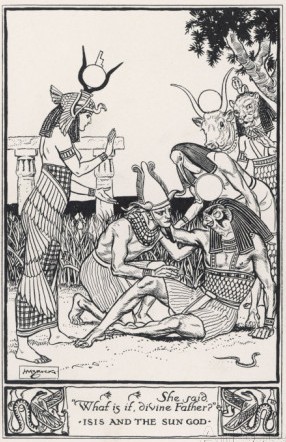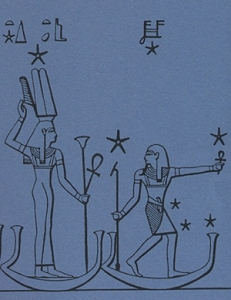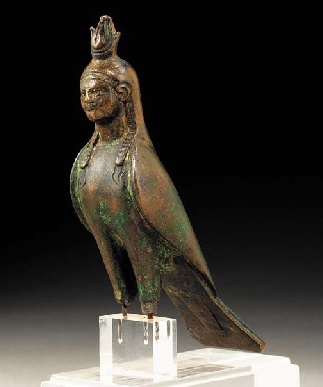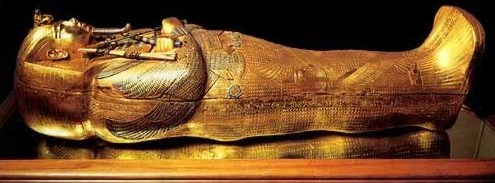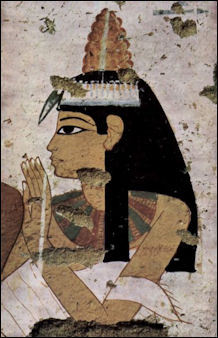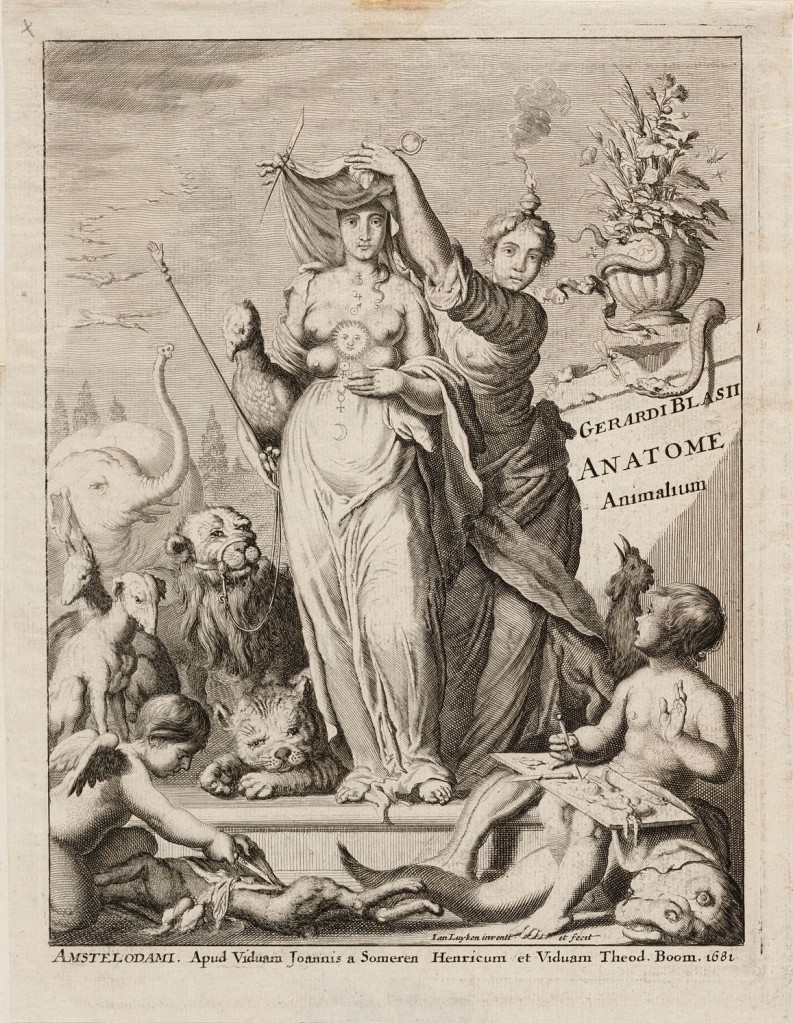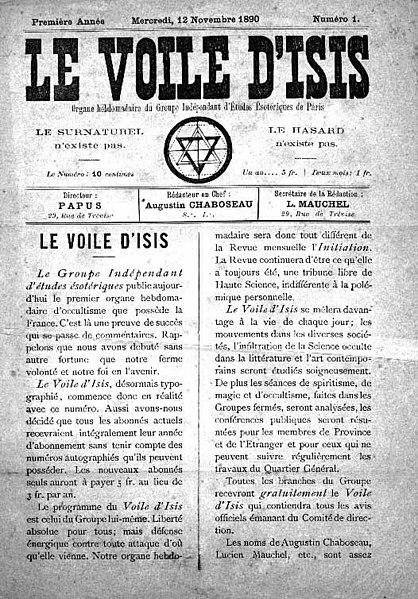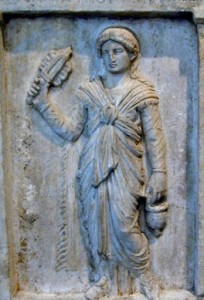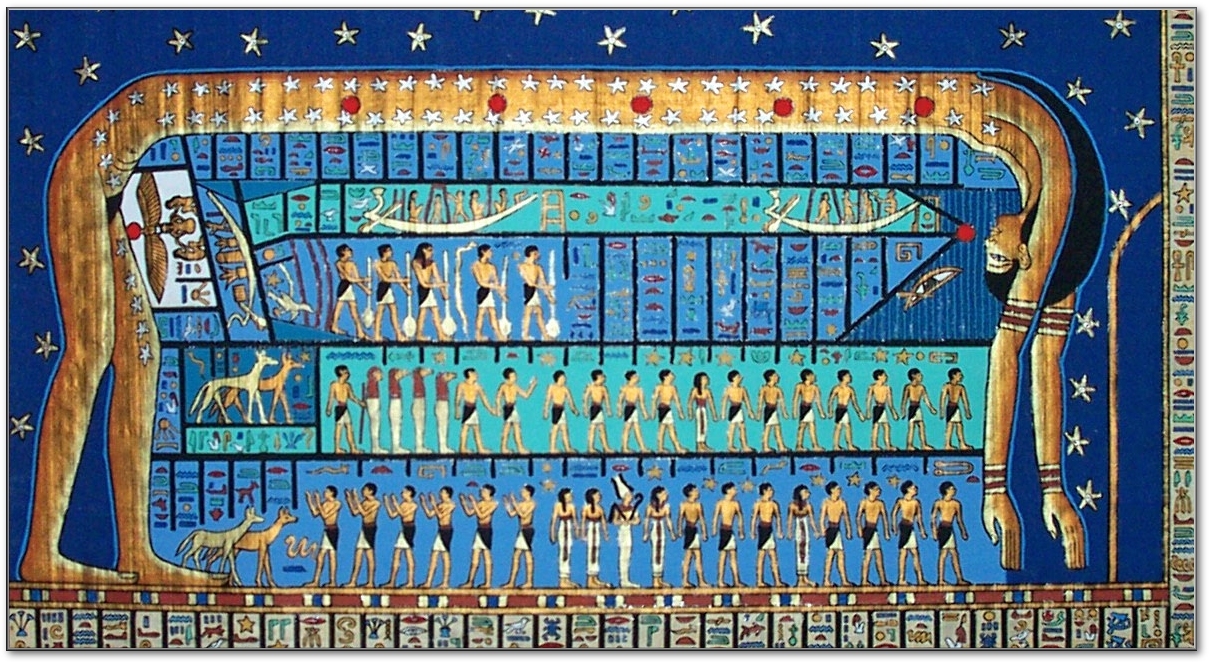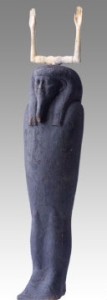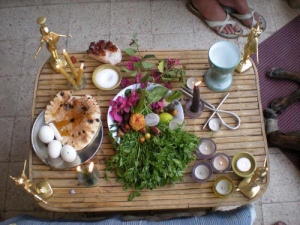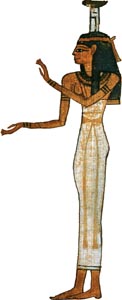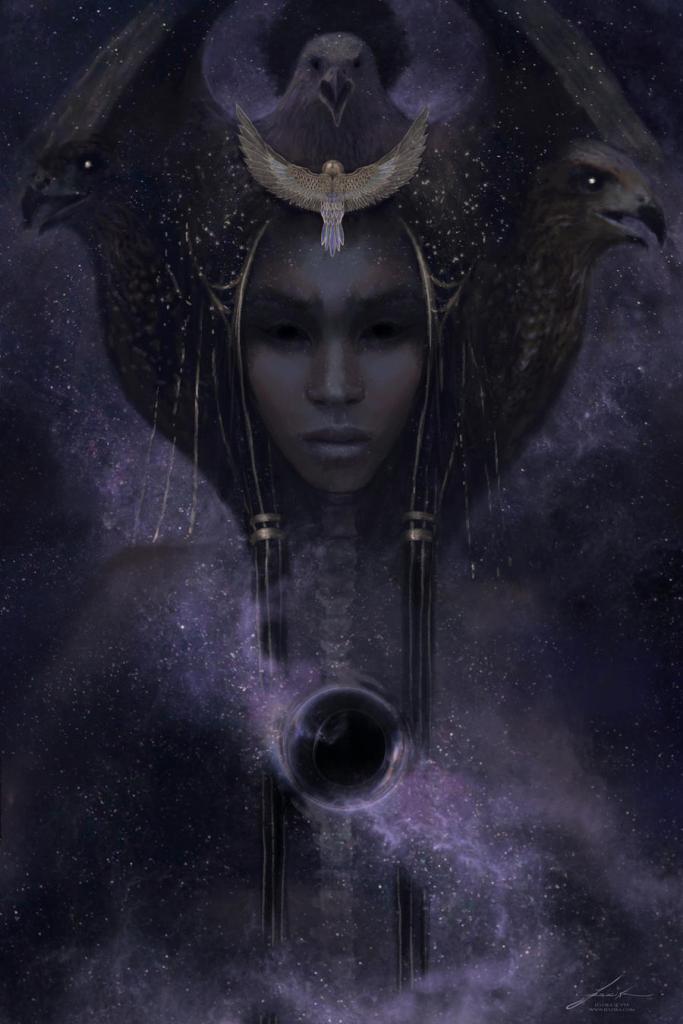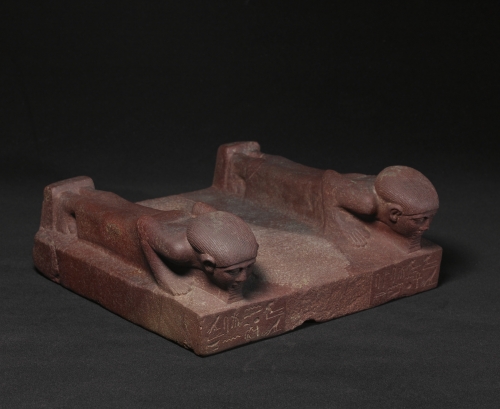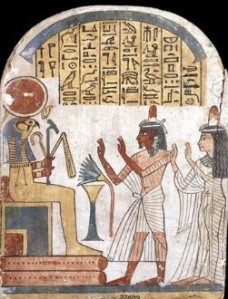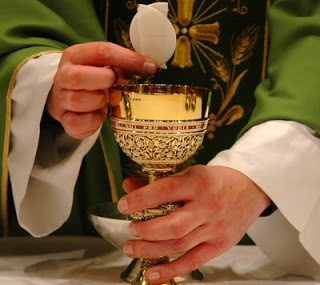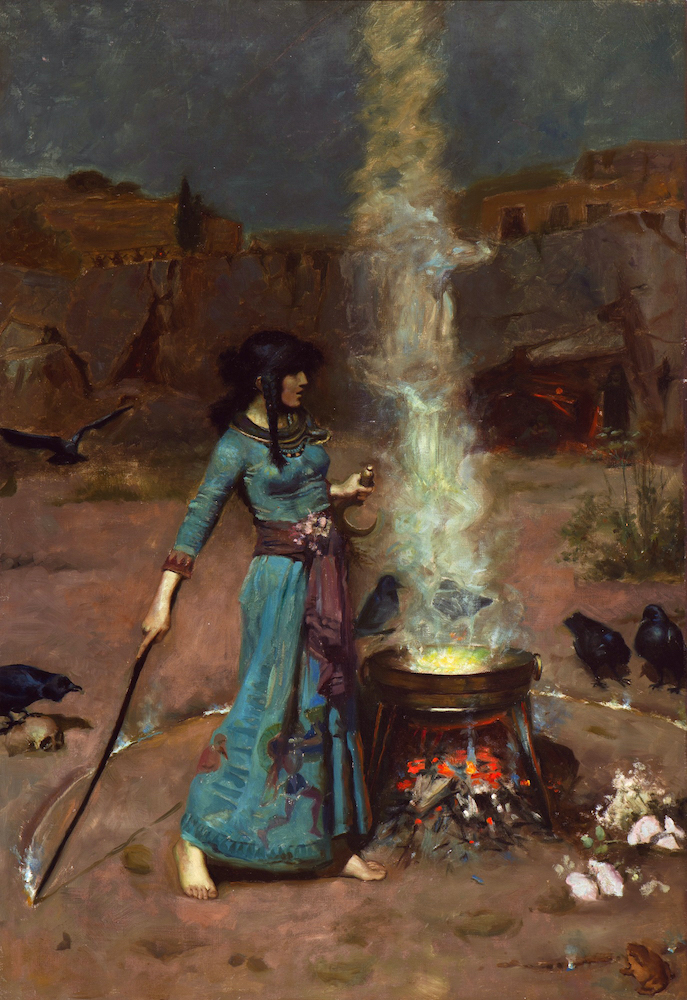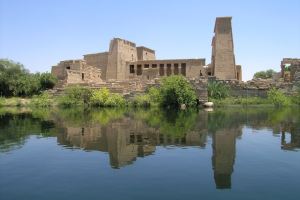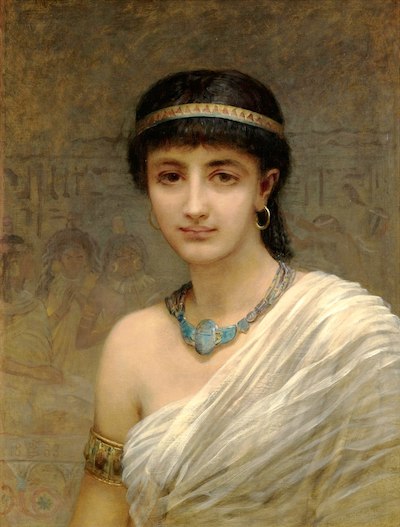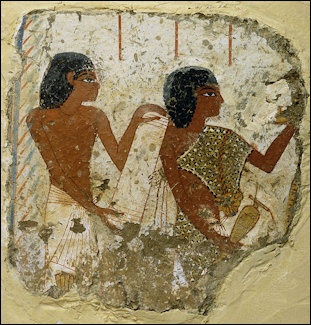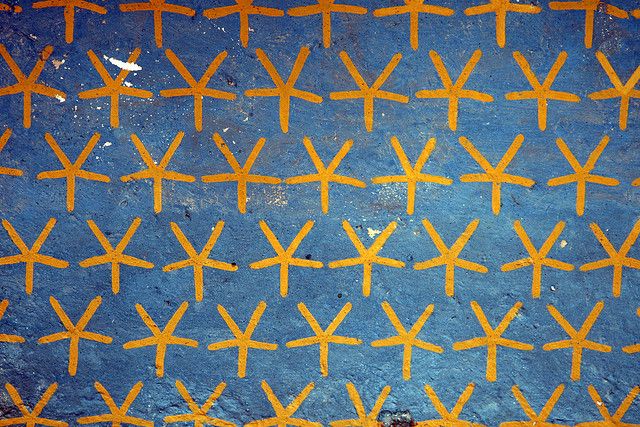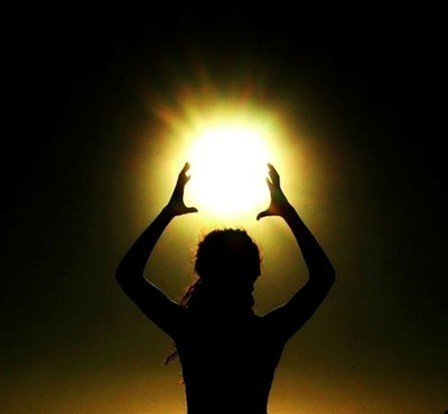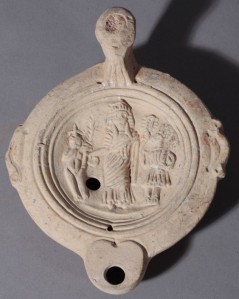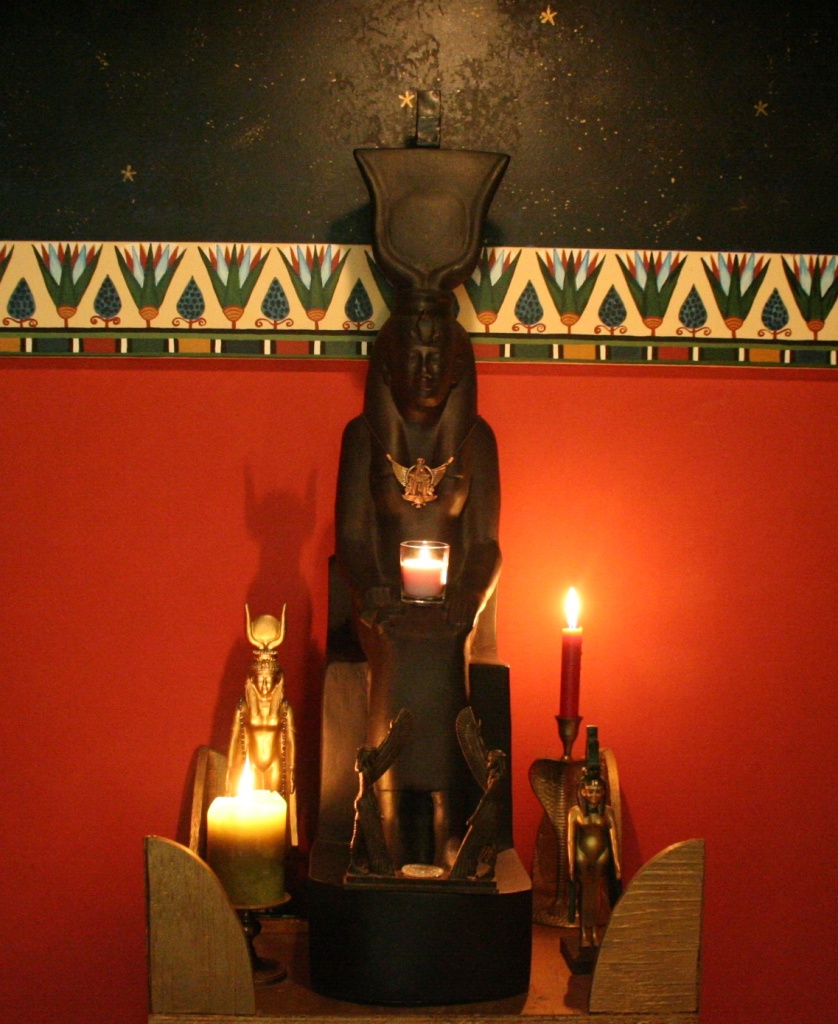While I have no declared priestesshood for Nuet, She draws me. A lot. In fact, almost anytime I do spiritual work with Her, I am overawed by Her Eternity, Her Depth, Her Beauty, and I want to lose myself in Her.
Nuet is the mother of Isis. And She is also the One Who Bears All the Gods and Goddesses, and so She is called the Mistress of All. She is the Splendid and Mighty One in the House of Her Creation. She is the Great One in Heaven and the “indestructible stars” (that is, the circumpolar stars that are always visible) are said to be in Her.
She embraces the deceased “in Her name of Sarcophagus” and “in Her name of Tomb.” She is the Mistress of the Duat (the Otherworld). She is the Glowing One (as the Milky Way) and in Her we are joined to our stars, Becoming divine. She is the one Who gives birth to us and Who welcomes us back into Her starry body at our deaths. She is Heaven and She is the Otherworld. She is the one Who is “Amid the Iset Temple in Denderah” for She is over Her daughter Isis and Her daughter is both in and of Her.
As Nuet gives birth every day, She is the quintessential Mother Goddess. She births the Sun God Re each day and receives him back into Her body, by swallowing Him, each night. She also gives birth to Him yearly at the winter solstice. A cycle within a cycle within the Mother.
The decan stars, by which the ancient Egyptians kept time throughout the night, rise and set within Her heavenly body and so She is also a keeper and regulator of time. In one instance of what Egyptologists refer to as a “shadow clock,” the Hours of the Night are counted off in relation to where the sun is on/in Nuet’s body: First Hour, “hand,” Second Hour, “lip.” Third Hour, “tooth,” Fourth Hour, “throat,” and so on.
Most ancient Egyptian painted representations of Deities show Them in profile. Yet there are a few Who come to us face-forward. The Great Goddess Hathor is famously depicted that way, as is Bes, the God Who is a protector of households, children, and mothers. Interestingly, we also find Nuet shown in this way. Like Hathor, She is a Mother Goddess and like Bes, She is a mighty protectress.
We often find Her on the inside of a coffin, stretched out over the deceased person like the sky, positioned face-to-face with them. This face-forward, face-to-face position is particularly intimate, particularly appropriate for the close relationship with a mother…or a Mother Goddess. Yet facing forward is also a protective stance. We see some of these face-forward Deities holding dangerous beasties (scorpions, snakes, crocodiles) harmlessly in Their hands, demonstrating how They can protect us from real as well as metaphorical beasties. Isis’ son, Horus the Child or Harpokrates, is often shown in this way on what are known as Cippi of Horus.
Nuet has another interesting epithet that is found in the Otherworld books known as The Book of Caverns and the Book of the Earth. Just like the more-famous Book of the Dead, these are magical texts to assist the dead in the Otherworld.
In these books, there is an important Goddess known as the Secret One, the Shetait. Egyptologists generally believe that this is an epithet of Nuet. As the Secret One, Nuet can be seen, not face-forward, but standing between serpents and crocodiles that She has tamed on behalf of the Sun God (and thus the deceased). Her power over them is in the form of heat or fire. They “stay in their place due to the fire, the heat which is in this Goddess,” says the Book of the Earth. The Book of Caverns says that the Goddess “is secret of form, being in their darkness as a flame to which the gods cannot ascend.” She is thus a fiery Light in the Darkness, a flame that protects and illuminates.
And now, back from Egypt, I’m excited to have my very own photos of the illustration above. You should have heard me squeal when I recognized it in the tomb! Here it is:
The Secret One holds in Her hands a sun disk and, in this case, a ram-headed God, or sometimes a ba-bird. Either represents the Sun God, Who is in the process of being regenerated and reborn. Thus, the Secret One holds this process in Her hands.
The Book of Caverns tells us that the Secret One’s head is in the upper Duat while Her feet are in the lower Duat. The Sun God travels upon Her arms, but at the same time is hidden by Her from the Gods, the akhu (the transfigured, light-filled, potent spirits), and the dead. The process of rebirth is delicate and must be hidden until the proper time. In the Book of the Earth, it is said that “the Double Ba, He travels Her body.” The Double Ba is the conjunction of Re and Osiris—something that must also happen in the Duat in order for the sun to be reborn.
In Her Name of Sarcophagus, Nuet spreads Herself out over the deceased and then She is called Shet Pet. Shet Pet is a common epithet of Nuet’s and means “Coverer of the Sky.” With a little bit of the word play for which the ancient Egyptians were so well known, this epithet can also be interpreted as the Secrecy of the Sky (Sheta Pet) reinforcing Nuet’s identification as the Secret One.
With Her doubled snakes and containing the Double Ba, Nuet can also split Herself in two and become manifest as Her two daughters, Isis and Nephthys. Just as Nuet unites the east and west with the arch or Her body across the sky, so Her daughters form a unity as They position Themselves to the right and left of Osiris or They are to be found framing either side of one of the illustrated scenes in the Otherworld books.
The Secret One is, for me, a particularly potent epithet of the Goddess. It tastes of Her Mystery, the great Mystery of Life and Death and Rebirth. It speaks of Her Eternity. It breaths forth Her Depth and Her Power.


